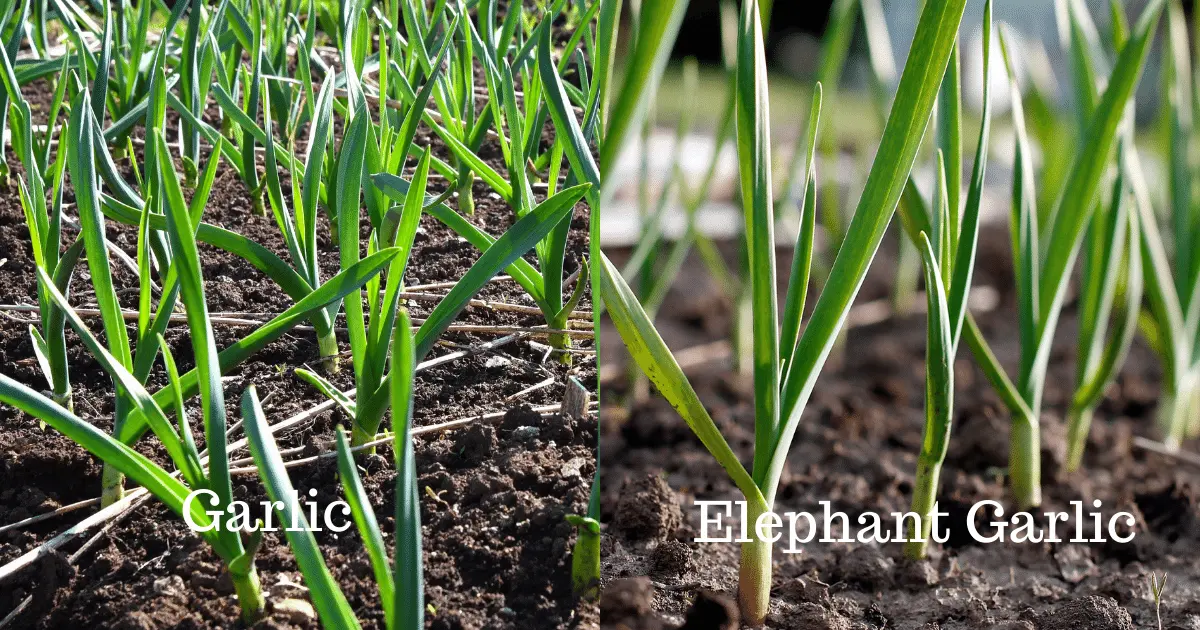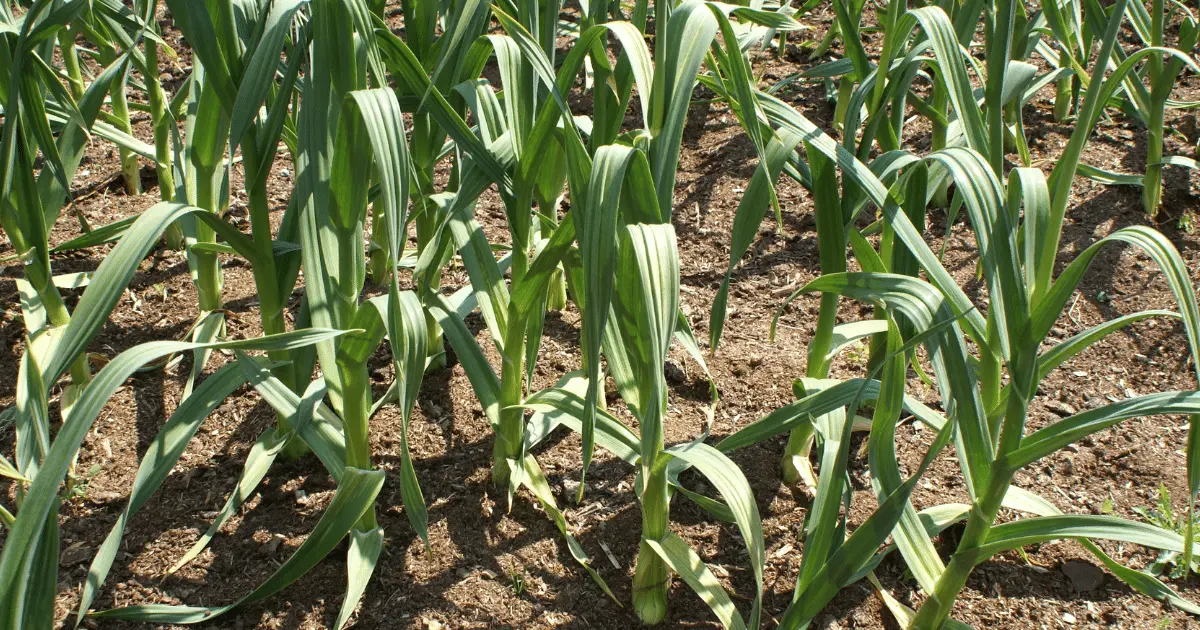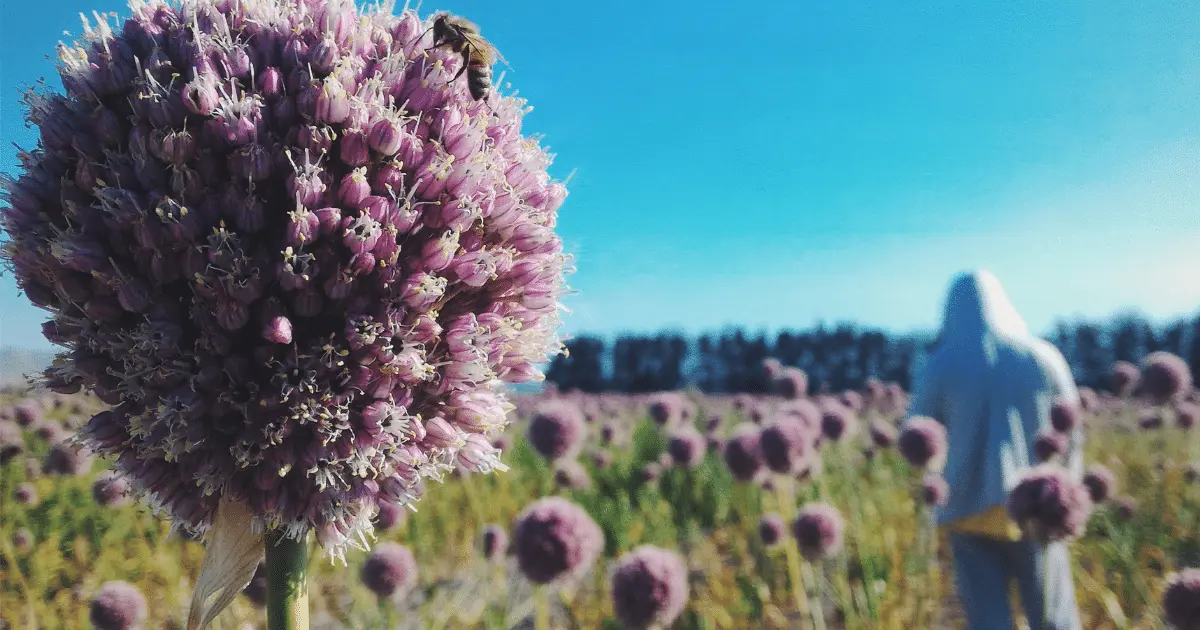Garlic and Elephant Garlic are often mistaken for each other, not because of their physical attributes but because they share the same name and taste. The two plants share the same basic shape and root structure but are not closely related.
Garlic vs. Elephant Garlic

Garlic (Allium sativum) is an edible bulbous plant native to Asia that has been cultivated for several thousand years. Its leaves appear flattened and grass-like and form a firm bulb, typically containing between four and twenty cloves encased in a papery exterior.
It is also one of the most common vegetation that was gravely investigated for more than a few years for centuries to brawl communicable diseases. Garlic contains enzymes, minerals, and sulfur compounds responsible for its overpowering odor and many therapeutic personal properties.
Elephant garlic (Allium ampeloprasum var. ampeloprasum) is an odd little plant that looks like a giant bulb and has a mild garlic flavor but is more closely related to leeks than garlic. This particular plant is a biennial, meaning it completes its life cycle in two growing seasons, and this also means that you will get a single bulb in the first year when the plant doesn’t flower.
| Garlic | Elephant Garlic | |
| Botanical name | Allium sativum | Allium ampeloprasum var. ampeloprasum |
| Plant type | Bulb, vegetable | Vegetable |
| Family | Amaryllidaceae | Amaryllidaceae |
| Mature size | 12 to 18 inches tall, 6 to 12 inches wide | 2-3 ft tall, 1-2 ft wide |
| Sun exposure | Full sun | Full sun |
| Soil type | Moist, well-drained soil | Loamy, well-drained soil |
| Soil pH | Slightly acidic to neutral | Neutral |
| Bloom time | Spring | Spring, summer |
| Flower color | Lime green, pink or white | Purple |
| Hardiness zones | 4-9 (USDA) | 3-9 (USDA) |
| Native area | Asia | Europe, Africa, Asia |
| Toxicity | Toxic to animals | Toxic to animals |
Both plants are culinary favorites, but elephant garlic tastes much milder than garlic. When crushed, elephant garlic produces the same flavor compounds produced as garlic and releases the same flavor compounds produced by onions and leeks, just less of each type. Each of these plants has cloves inside a wrapped bulb.
Garlic heads have as many as 20 cloves, but elephant garlic has more than six and a yellowish cast. Elephant garlic is huge compared to garlic, and it has a tall and thickly built stalk with a very large garlic-like bulb at its base.
For people who dislike garlic’s powerful pungency and characteristics, elephant garlic might be a better choice. It isn’t a suitable replacement for garlic in applications where the flavor is meant to be robust. However, it can be a great addition to a dish when a sweeter, more subtle flavor is needed.
Uses
These two plants have many uses. For garlic, it is among the most important plants that are intensively used in traditional medicine. For this purpose, it has been used worldwide for centuries, especially in the Far East.
Garlic is a wonderful medicinal plant because of its preventive characteristic in cardiovascular diseases, regulating blood pressure, and lowering blood bacterial, viral, fungal, and parasitic infections while enhancing the immune system and having antitumoral and antioxidant features. Unlike garlic, elephant garlic contains Allicin, meaning you get the health benefits of garlic in elephant garlic.
Due to its mild garlic flavor, elephant garlic makes a great addition to raw dishes like dips and vinaigrettes. It can be roasted with seafood, poultry, and meats for a spectacular meal. It can also be sautéed, sliced, eaten raw, or minced.
How To Plant
1. Garlic

When To Plant
Garlic is usually planted in the fall or the spring, depending on your climate. However, it’s best to plant garlic in early spring in warmer climates, though the seed must be chilled first to break it out of its dormant state.
When planting garlic in the fall, start as soon as the soil temperature has dropped to 60 degrees Fahrenheit. Otherwise, the roots will only be able to prevent the plants from heaving upward when the soil freezes.
Selecting a Planting Site
Garlic prefers full sun and moist, well-drained, loose, and sandy conditions. Using loose soil allows the bulb to grow easily without rotting from heavier and wetter soil or damaging the papery skin that protects the garlic bulb from rot.
Planting
Before planting, start with tablespoons of 5-10-10 complete fertilizer, bonemeal, or fish meal into the soil several inches below where the base of the garlic cloves will rest. Make sure you select large and healthy cloves that are free of disease.
The larger the clove, the bigger and healthier the bulb you will get the following summer. Dig holes in the ground 2 to 3 inches deep to plant your garlic cloves with space holes four to6 inches apart. If you’re planting in rows, space each row 2 inches apart, but if you’re tight on space, plant the cloves and rows closer together.
2. Elephant Garlic

Before planting, divide the elephant garlic bulb into cloves. Then plant each clove with its pointed end around 4 to 6 inches deep, spacing them roughly around 8 to 12 inches apart to allow some airflow between the plants. Press down the soil over the cloves and water it lightly to send up flower stalks or scrapes, just like regular garlic.
The scrapes are edible, so they will draw energy from the plant that should be bulking up the bulb. Elephant garlic prefers full sun and can be grown in temperate regions into tropical zones.
It is important to top-dress the soil with well-aged manure and mulch around the plants with chopped leaves or sawdust to keep the weeds at bay. Doing this will also help to nourish the plants as the amendments decompose or break down.
How To Care
Light
Both plants love light. To ensure good growing success, plant garlic in a spot that receives full sunlight for at least six to eight hours a day. Elephant garlic can grow in partial shade, but for larger bulbs, you need to grow them in full sun.
Soil
Garlic prefers a well-draining nutrient-rich soil with an ideal ph of 6.0 to 7.0. Elephant garlic grows best in loose, organically rich soil with a neutral soil ph, and they also thrive best in sharp soil drainage.
Water
Garlic receives an inch of water per week, with a slight increase if the weather is warm. The soil should be kept evenly moist throughout the first part of the growing season but must be allowed to go dry for two or three weeks before harvesting. Elephant garlic needs regular watering, so the soil remains moist but not soggy.
Note: Overwatering can rot the bulbs, so it’s best to water in the mornings so the foliage can dry before nighttime; otherwise, it can lead to fungal growth.
Temperature and Humidity
Garlic has no special humidity requirements and grows best through colder winter months. Elephant garlic prefers the temperatures of its growing zones, and high temperatures can lead to fungal growth and rot on the plants.
Fertilizer
As you plant garlic in the fall, mix a slow-release organic fertilizer blend into the soil. Then, when the leaves begin to grow in the spring, feed the soil surrounding your plantings with a fertilizer blend high in nitrogen.
For elephant garlic, add some compost into the soil for a good organic fertilizer. Then add another layer of compost the following year if you still need to harvest your bulbs.
Common Pests and Diseases
Garlic does not have issues with a lot of pests and diseases. For example, nematodes can be a chronic problem for garlic as they live inside the plant and eat it while reproducing. To control, plant clean stock, inspect growing plants frequently, and remove any plants that look diseased.
Other pests attacking garlic plants include onion thrips, plague garlic, and white rot fungus. Like garlic, elephant garlic has a few issues with pests and diseases.
Slugs are one of the most common pests that affect elephant garlic. To control, remove the diseased plants and start again in better growing conditions.
